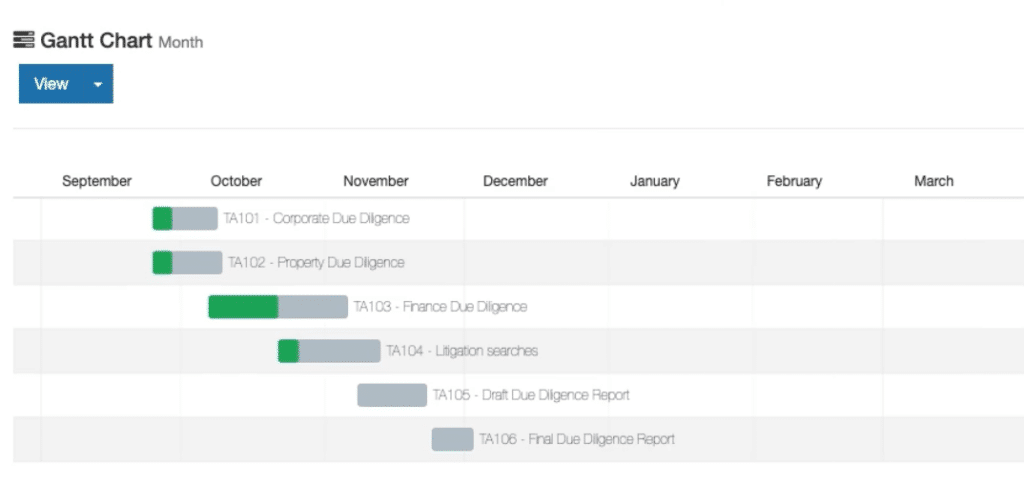With a myriad of challenges facing the global legal industry there is little doubt that technology will remain on the agenda and form a key part of strategic plans for legal departments and law firms alike. Yet, with technology moving at an unprecedented pace, especially in the legal industry, it is hard to stay across the important trends.
In this article we share what we consider to be the top 7 most relevant legaltech trends to watch in 2022.
1. Legal automation
Over the past 2 years we have witnessed a growing appetite and interest in automation, and with the legal industry in the grip of the “great resignation” this type of technology can play a role in easing the pain. Firstly, by helping a resource-constrained team to cope with the volume of work, and secondly, to attract new team members who might be impressed by the use of automation technology for addressing those manual, repetitive or administrative tasks.
Modern legal automation is usually categorised as either no-code or low-code automation.
No-code automation
Allows lawyers to quickly build and deploy digital applications using no lines of code.
Best for basic stand-alone applications, simple question forms and basic outputs that rely on logic to perform repetitive tasks such as standardised documents and contracts.
Low-code automation
Allows lawyers to quickly build and deploy digital applications using minimal coding.
Best for more complex and customisable systems that function through variables and conditions and may need to be integrated with other systems within the organisation. This can include legal and compliance tools.
Benefits for both types of automation is the time, costs and resources saved, in addition to the flexibility and scalability of the processes.
Read more: When Low-Code/No-Code Development Works – and When it Doesn’t
2. Contract and document automation
Contract and document automation are some of the most common (and popular) legaltech solution trends in the legal industry. Not only can they be built using low-code and no-code automation, they are also highly configurable and can be integrated with other systems. As such, they can be utilised by different functions to solve many pain points, save time, reduce risk and drive efficiencies within an organisation.
Functions where contract automation can be applied include HR, Procurement, Compliance and Risk, as well as Legal, with popular use cases such as issuing NDA’s, employment contracts, lease agreements, procurement contracts, engagement letters and so much more.
Read more: The In-House Guide to Legal Document Automation
3. Workflow automation
Legal workflows are clear, predetermined, and structured processes within which lawyers receive, review and perform tasks. Automated legal workflows, therefore, are those processes in which technology is utilised to facilitate, structure, and streamline the performance of tasks. As with contract and document automation, the main benefits of legal workflow automation include saving lawyer’s time, reducing human errors and driving efficiencies within a department whilst enhancing client service delivery.
Examples of repetitive, frequent, and low risk workflows that would benefit from automation include legal intake, instructing law firms, conducting RFPs, matter management, spend management, regulatory and compliance workflows, and more.
Read more: A Beginners Guide to Law Office Automation
4. RegTech solutions
RegTech solutions are a category of technology in industry that assist organisations effectively navigate different functions within the regulation landscape. This includes functions such as regulatory reporting and compliance, risk management, identity management, monitoring transactions and more.
According to Deloitte, RegTech tools for compliance combine regulation, risk assessment and risk management into a compliance collaboration platform. They monitor and identify changes in the regulation landscape, evaluate the impact and disseminate the relevant information to the relevant department in a timely and efficient manner.
An example of a RegTech solution for financial services breach reporting compliance is the Gadens Breach Manager, which streamlines the collation, assessment and reporting processes to ensure compliance whilst managing and mitigating potential risks.
Looking to the future we expect to see a greater emphasis on RegTech solutions that combine machine learning technology and rules-based automation with a focus on highly practical applications.
Read more: New Breach Reporting Obligations for Financial Services are Here: What does that mean?
Read more: REGTECH: A few things in-house lawyers should know
5. Client and law firm collaboration
“Some of the most important future innovations will not come from new technologies but from new forms of collaboration,” Thomas Malone, MIT
The ability to facilitate seamless collaboration and communication between law firm and client is a necessary competency to remain competitive in the increasingly digital legal landscape. Although the concept of client collaboration tools is not new, the processes, capabilities and scope of functionality provided by these tools has advanced significantly. Generally referred to as ‘client portals’, the next generation of client portals have evolved beyond file sharing and one-way communication flows towards real-time collaboration, project management, BI intelligence reporting and much more.

In addition to providing greater transparency, and facilitating more effective communication and collaboration processes, some welcome side-effects of the new ways of using client portals include modernising and enhancing the client experience through customised intelligent intake forms and secure and integrated collaboration workspaces.
Read more: The Future of Collaboration Technology is Now
6. Tools to support transparent and predicable legal spend
The legal industry is experiencing a fundamental shift in market dynamics. These changing dynamics are creating increased demand for legal services reported in the UK and Australian markets in particular and the tight employment market is driving increased competition for skilled and experienced lawyers. As a result, there are numerous anecdotal reports of sharp and significant increases in salary to attract and retain key staff. Industry economics indicate that these market dynamics must translate to higher rates and fees charged to law firm clients.
Therefore, it can be anticipated that there will be a corresponding pressure from clients to be able to have transparent and predictable fees, efficient legal project management capability and alternative fee arrangements.
Matter-based fees, fixed fees and subscriptions, are popular billing methods being adopted by legal professionals as an additional option, substitute and/or replacement to the long-standing and traditional time-based pricing model. The key driver to this change is client’s growing expectations for transparency and value for money, however, this pricing model offers benefits for both the client and the law firm.
Benefits for clients include greater control over billing process and the ability to compare prices of legal services. While the benefits for lawyers include establishing stronger relationships with their client’s based on trust, and an opportunity to increase productivity through a stronger focus on service delivery, rather than time.
Read more: Leveraging Alternative Fee Arrangements
Read more: Innovative Approaches to Legal Spend Management
7. Artificial Intelligence
Artificial Intelligence (AI) is predicted to disrupt all areas of industry, and while some professions are readily welcoming the change and innovation, others are worried about what AI could mean for their future. The legal profession is probably somewhere in the middle. Being a growing and largely misunderstood area of technology, there currently aren’t many examples of pure AI at work in the legal industry as many applications are more closely aligned with Augmented Intelligence. However, reports by McKinsey, Deloitte, the International Legal Technology Association (amongst others) have shared predictions which describe how AI will transform the legal industry within the next 3 years.
Read more: Four Imperatives for the Next-Generation Legal Department
Conclusion
2022 will see legal departments plan for and progress significant digital transformation projects and will look to technology solutions to solve for a diverse range of problems. Likewise, increased adoption of technology across the legal industry which will also fuel further research, investment and innovation by legal technology companies and law firms alike. So – strap yourself in and get ready for an exciting year ahead!

